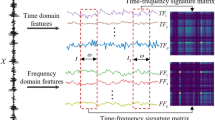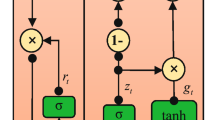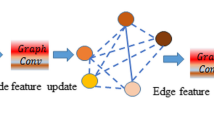Abstract
Most data-based bearing fault intelligent diagnosis methods have assumed that all data is under the same working conditions. However, the fault data under unknown working conditions cannot be fully obtained under industrial applications. When there is no prior data, the diagnostic accuracy rate of these methods will drop significantly. Therefore, we propose a zero-shot bearing fault diagnosis method based on extended semantic auxiliary information. The semantic autoencoder method is used to project the frequency-domain features of bearing signals into the semantic space and diagnoses bearing faults under unknown working conditions in the semantic space. To help the model achieve better classification, an attribute inference module based on the back propagation neural network and deep convolutional neural networks with wide first-layer kernels is proposed to extend abstract semantic information to supplement auxiliary semantic information. The bearing datasets from CWRU and MFPT are used to verify the effectiveness of the proposed method. Three comparative experiments prove the accuracy and robustness of the proposed method.










Similar content being viewed by others
References
Zheng K, Li TL, Su ZQ et al (2021) Sparse elitist group lasso denoising in frequency domain for bearing fault diagnosis. IEEE Trans Ind Inf 17(7):4681–4691
Zhenghong W, Jiang H, Zhao K, Li X (2020) An adaptive deep transfer learning method for bearing fault diagnosis. Measurement 151:107227. https://doi.org/10.1016/j.measurement.2019.107227
Che CC, Wang HW, Fu Q et al (2019) Deep transfer learning for rolling bearing fault diagnosis under variable operating conditions. Adv Mech Eng 11(12):1–11
Lu T, Yu FQH, Han BK et al (2020) A generic intelligent bearing fault diagnosis system using convolutional neural networks with transfer learning. IEEE Access 8:164807–164814
Junbo T, Weining L, Juneng T et al. (2015) Fault diagnosis method study in roller bearing based on wavelet transform and stacked auto-encode. In: 27th Chinese control and decision conference, Qingdao, Peoples R China, pp 23–25 May 2015
Deng SC, Cheng ZW, Li C, et al. (2016) Rolling bearing fault diagnosis based on deep Boltzmann machines. In: Prognostics and system health management conference, Chengdu, Peoples R China, pp 19–21 Oct 2016
Gan M, Wang C, Zhu CA (2016) Construction of hierarchical diagnosis network based on deep learning and its application in the fault pattern recognition of rolling element bearings. Mech Syst Signal Process 72:92–104
Zhang W, Peng GL, Li CH (2017) Bearings fault diagnosis based on convolutional neural networks with 2-d representation of vibration signals as input. EDP Sci 95:13001
Zhao R, Yan RQ, Wang JJ et al (2018) Learning to monitor machine health with convolutional bi-directional lstm networks. J Mech Eng 64(7–8):443–452
Jie Lu, Behbood V, Hao P et al (2015) Transfer learning using computational intelligence: a survey. Knowl Based Syst 80:14–23
Pang S, Yang XY (2019) Across-domain stacked denoising autoencoders for rotating machinery fault diagnosis under different working conditions. IEEE Access 7:77277–77292
Tian W, Chen J, Lin Y (2021) Bearing fault diagnosis in variable conditions based on transform component analysis and bag of words. J Chongqing Univ https://kns.cnki.net/kcms/detail/50.1044.N.20210412.1455.004.html
Ji Z, Wang HR, Yu YL et al (2019) A decadal survey of zero-shot image classification (in Chinese). Sci Sin Inform 49:1299–1320. https://doi.org/10.1360/N112018-00312
Haixin L, Jinglong C, Tongyang P et al (2020) Hybrid attribute conditional adversarial denoising autoencoder for zero-shot classification of mechanical intelligent fault diagnosis. Appl Soft Comput 95:1–12
Lampert CH, Nickisch H, Harmeling S (2014) Attribute-based classification for zero-shot visual object categorization. IEEE Trans Pattern Anal Mach Intell 36(3):453–465
Akata Z, Reed S, Walter D, et al. (2015) Evaluation of output embeddings for fine-grained image classification. In Proceedings of the IEEE conference on computer vision and pattern recognition, Boston, MA, pp 07–12 Jun 2015
Socher R, Ganjoo M, Manning CD, et al. (2013) Zero-shot learning through cross-modal transfer. In: Advances in neural information processing systems, pp 935–943
Frome A, Corrado GS, Shlens J, et al. (2013) Devise: a deep visual-semantic embedding model. In Advances in neural information processing systems, pp 2121–2129
Reed S, Akata Z, Lee H, et al. (2016) Learning deep representations of fine-grained visual descriptions. In 2016 IEEE conference on computer vision and pattern recognition, Seattle, WA, 27–30 Jun 2016
Fu YW, Hospedales TM, Xiang T et al (2015) Transductive multi-view zero-shot learning. IEEE Tran PAMI 37(11):2332–2345
Kodirov E, Xiang T, Gong SG (2017) Semantic autoencoder for zero-shot learning. In: 2017 IEEE Conference on Computer Vision and Pattern Recognition, Honolulu, HI, USA , 21–26 July 2017
Wang W, Zheng VW, Yu H et al (2019) A survey of zero-shot learning: settings, methods, and applications. ACM Trans Intell Syst Technol 10(2):1–37
Dong YH, Jiang XH, Zhou HJ et al (2021) SR2CNN: zero-shot learning for signal recognition. IEEE Trans Signal Proc 69:2316–2329
Harris ZS (1954) Distributional structure. Word 10(2–3):146–162
Mikolov T, Sutskever I, Chen K, et al. (2013) Distributed representations of words and phrases and their compositionality. In: 27th annual conference on neural information processing systems, Lake Tahoe, 5–10 Dec 2013
Pennington J, Socher R, Manning CD (2014) Glove: global vectors for word representation. In: 2014 conference on empirical methods in natural language processing, Doha, 25–29 Oct 2014
Huang W (2018) Gu zhang zhen duan de bu que ding xing yu zhi shi huo qu. Beijing: Ke xue chu ban she, pp132–134
Zhang W, Peng G, Li C, Chen Y, Zhang Z (2017) A new deep learning model for fault diagnosis with good anti-noise and domain adaptation ability on raw vibration signals. Sensors 17(2):425
Bartels R (1972) Solution of the matrix equation ax+ xb= c [f4]. Commun. ACM 15:820–826
Jake S, Kevin S, Richard SZ (2017) Prototypical networks for few-shot learning. In: 31st annual conference on neural information processing systems (NIPS), Long Beach, CA,04–09 Dec, 2017
Loparo K (2017) Case Western Reserve University Bearing Data Centre Website. Available online: http://csegroups.case.edu/bearingdatacenter/pages/download- data-file (accessed on 20 September 2017)
Machinery Failure Prevention Technology (MFPT) Datasets. Available online: https://www.mfpt.org/fault-data-sets/ (accessed on 17 January 2013)
Author information
Authors and Affiliations
Corresponding author
Ethics declarations
Conflict of interest
The author(s) declared no potential conflicts of interest with respect to the research, authorship, and publication of this article.
Additional information
Technical Editor: Samuel da Silva.
Publisher's Note
Springer Nature remains neutral with regard to jurisdictional claims in published maps and institutional affiliations.
Rights and permissions
Springer Nature or its licensor (e.g. a society or other partner) holds exclusive rights to this article under a publishing agreement with the author(s) or other rightsholder(s); author self-archiving of the accepted manuscript version of this article is solely governed by the terms of such publishing agreement and applicable law.
About this article
Cite this article
Yang, B., Sun, H. A zero-shot learning fault diagnosis method of rolling bearing based on extended semantic information under unknown conditions. J Braz. Soc. Mech. Sci. Eng. 45, 35 (2023). https://doi.org/10.1007/s40430-022-03965-2
Received:
Accepted:
Published:
DOI: https://doi.org/10.1007/s40430-022-03965-2




